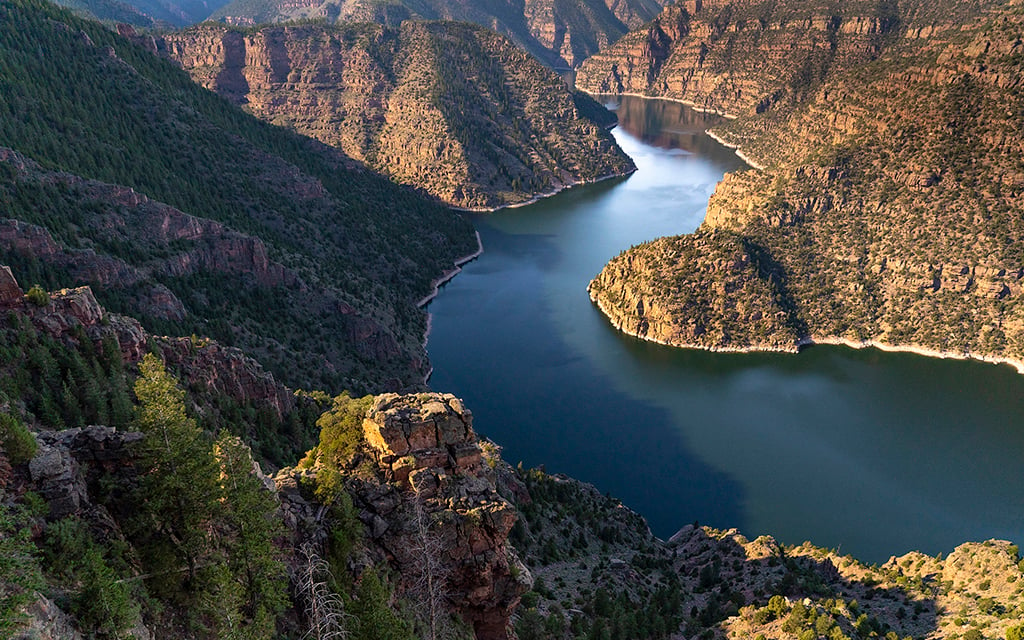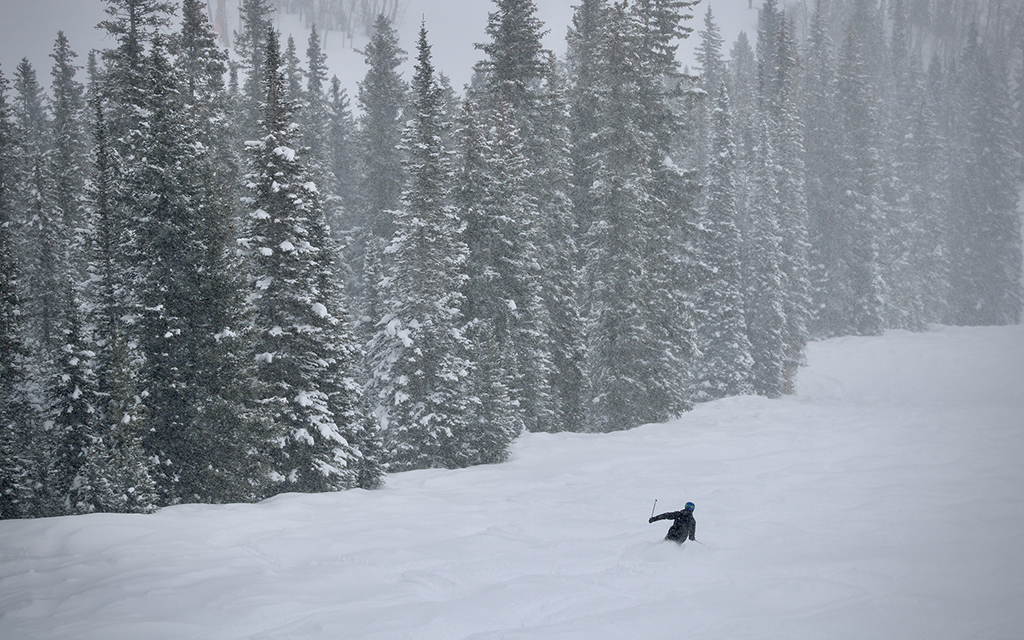
Flaming Gorge Reservoir in a June 2021 photo. The federal government has halted releases that were aimed at propping up Lake Powell downstream, as heavier than normal precipitation this winter has helped recharge the Colorado River watershed. (Photo by Ted Wood/The Water Desk).

Glen Canyon Dam holds back Lake Powell in this November 2022 file photo. Historically low levels at the lake could threaten the dam’s ability to generate hydropower, one of the reasons the government had been releasing water from Flaming Gorge Reservoir upstream. (Photo by Alex Hager/KUNC)
The federal government has halted releases from the Flaming Gorge Reservoir that were meant to prop up water levels at Lake Powell downstream, as heavy snows allowed the Bureau of Reclamation to end releases two months earlier than originally planned.
The decision Tuesday by Reclamation came at the request of Upper Basin states – Utah, Wyoming, Colorado and New Mexico – who wrote the agency last week to say that this winter’s precipitation reduced the need for the releases for now.
Lower Basin states – Arizona, Nevada and California – followed with their own letter urging the bureau to wait and see how spring runoff shaped up before amending the Drought Response Operations Agreement, which called for releases from Flaming Gorge until May.
That agreement called for the release of 500,000 additional acre-feet of water from Flaming Gorge between last May and this May. By reducing outflows a little less than two months early, it means the total additional amount of water released downstream over the year will be 464,000 acre-feet, the bureau said.
An acre-foot is the amount of water needed to fill one acre of land to a depth of one foot. One acre-foot generally provides enough water for one to two households for a year.
“We’re encouraged that Reclamation has begun to suspend Drought Response Operations releases from Flaming Gorge to Lake Powell,” wrote Amy Haas, executive director of the Colorado River Authority of Utah, in an email to KUNC, “but Utah’s priority is to put back all water previously released, approximately 588,000 acre feet, into (Flaming) Gorge as soon as possible given the favorable hydrology.”
Federal authorities have drawn from Flaming Gorge, located in the northeast corner of Utah and the southwest corner of Wyoming, to prop up Lake Powell, the nation’s second-largest reservoir after Lake Mead. As a megadrought continues to grip the region, water levels at Lake Powell have fallen to historic lows, threatening the ability to generate hydropower within Glen Canyon Dam.
The decision to suspend releases follows a public back-and-forth between groups of states that use water from the Colorado River. The Upper Basin and Lower Basin are often at odds about water management decisions, and the recent debate over Flaming Gorge represents a minor flare-up amid larger tensions about how to share the Colorado River’s supply, which is shrinking due to climate change.
In their letter last week, the Lower Basin states agreed with the Upper Basin proposal, but asked the federal government to exercise caution before making any decisions. Lower Basin leaders asked Reclamation to leave the door open for future releases, which may be needed later this year if that boosted runoff doesn’t materialize.
They also wanted to be consulted as part of the process to make decisions about Flaming Gorge and other similar reservoir releases.
This winter has brought heavy snow to high-altitude sections of Colorado, where the Colorado River gets its start. But some scientists worry that extraordinarily warm temperatures and dry soil could prevent some of that snow from reaching streams, rivers and reservoirs that rely on spring runoff.
Climate experts say this strong winter will provide a short-term boost for water storage along the Colorado River, but it won’t be enough to substantively turn around a 23-year megadrought that has shrunk the region’s supplies.
– This story is part of ongoing coverage of the Colorado River, produced by KUNC, and supported by the Walton Family Foundation.
